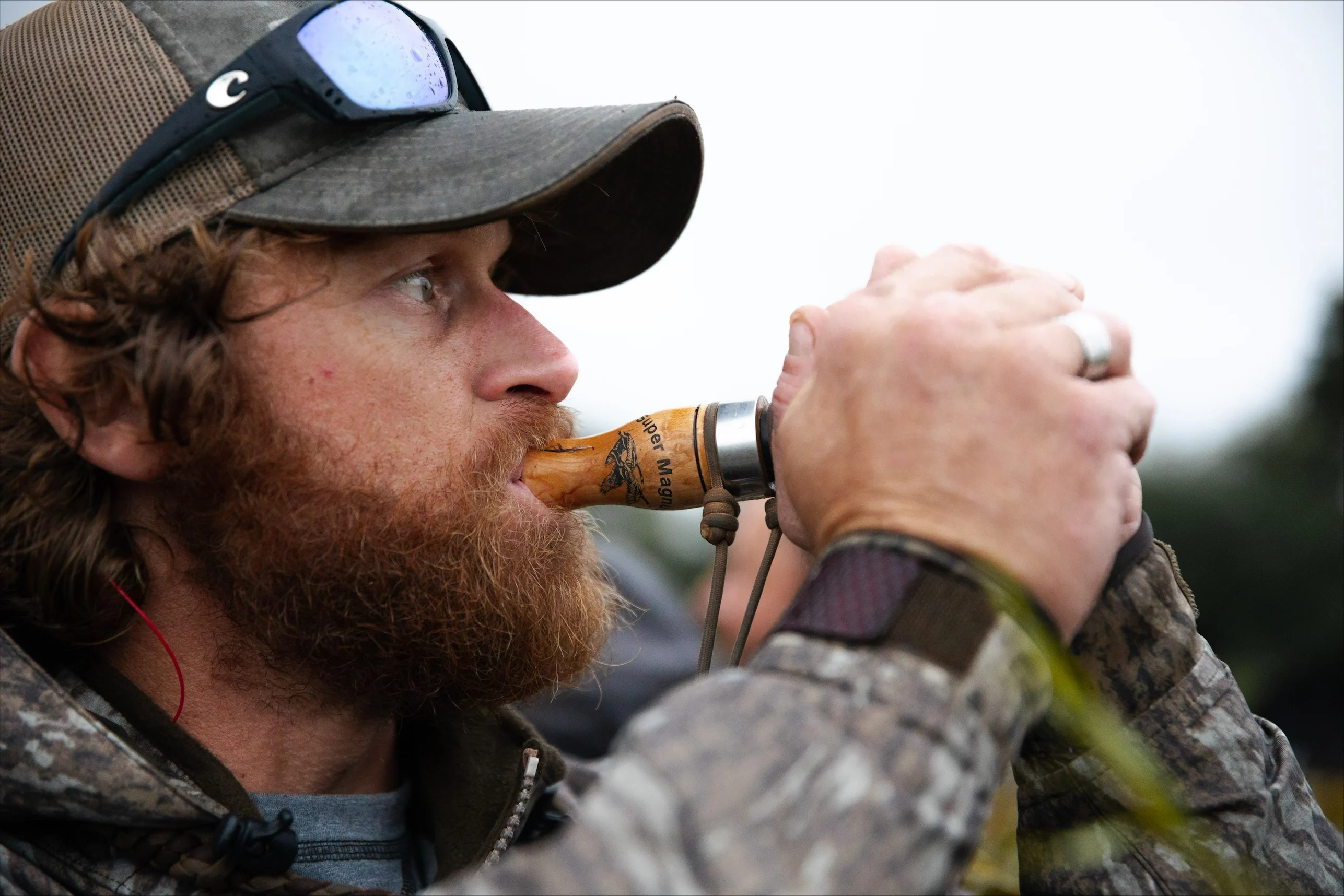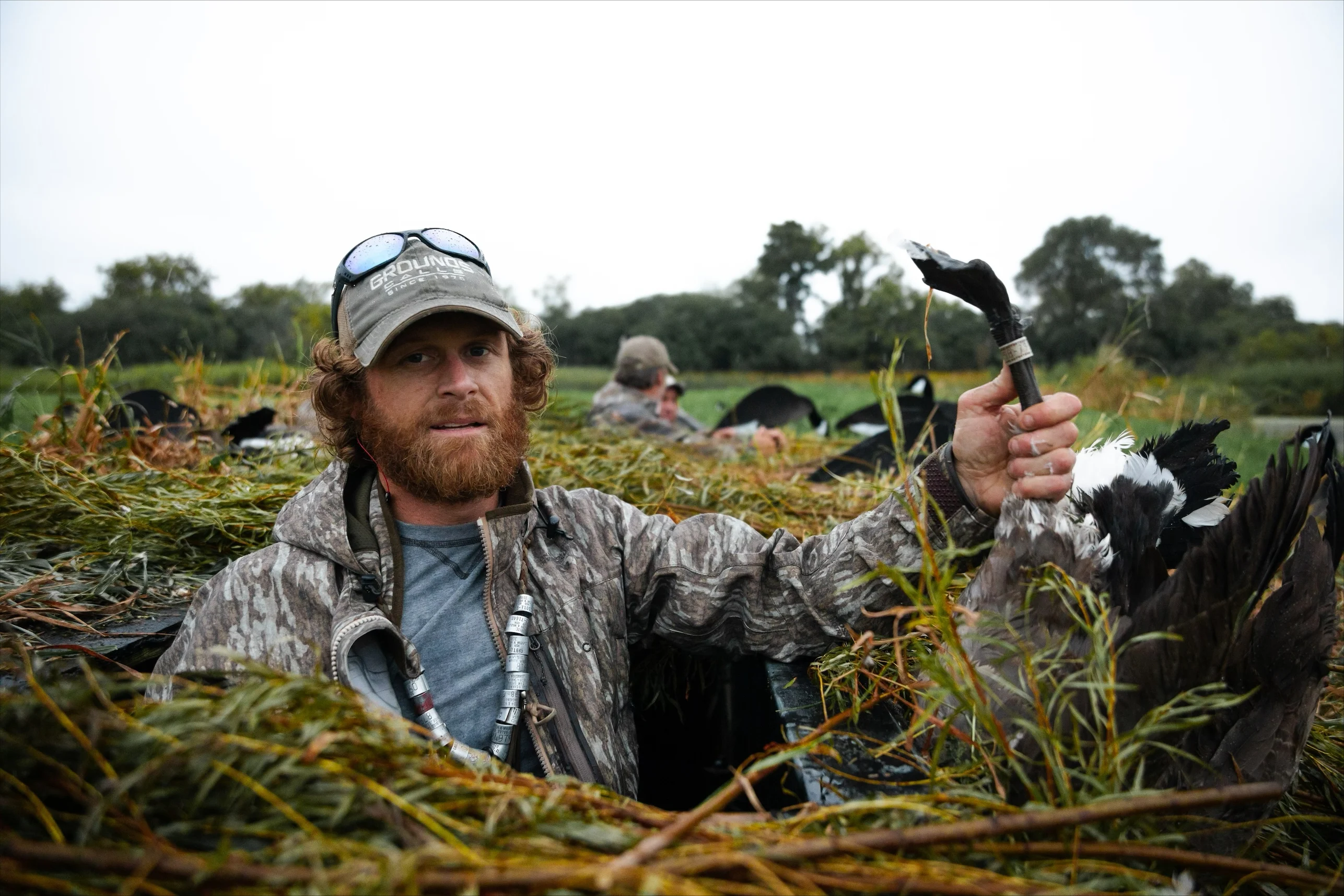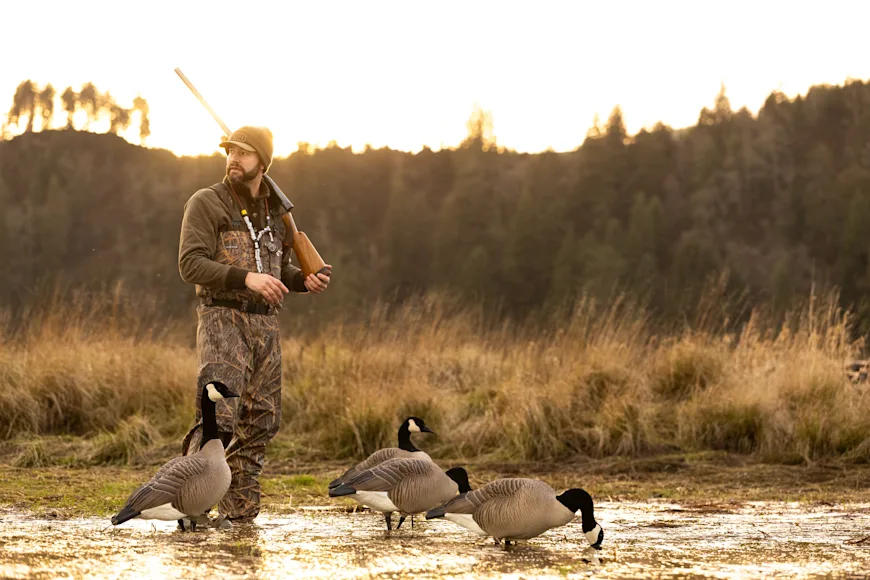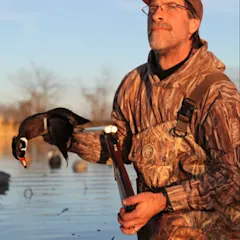After the regular duck season ends, there are still geese to chase. Across all four flyways, hunters have the opportunity to target late-season honkers and other subspecies of geese. However, these pressured birds can be challenging to fool, and shooting limits require scouting, an excellent hide, and talented callers.
That's why we brought in the experts. These four goose gurus include call makers, goose calling champions, and decoy designers. We asked them for their best tips, tactics, and advice for targeting geese in the bonus season. Combined, these hunters have over 150 years of experience chasing Canadas, whether big Midwestern honkers or the tiny cacklers of the Pacific Northwest. Here's how they consistently kill geese at the end of the season.

Mike Callian, Pacific Flyway
Former competitive caller Mike Callian lives in Albany, Oregon, and serves in the marketing department for Dave Smith Decoys. Callian has spent a lifetime hunting ducks and geese throughout the West, at one time working with Washington call-maker Bill Saunders. He now focuses on chasing all seven subspecies of geese in the PNW.
“I’ve been watching the big geese all year, and I’m seeing how their attitudes change, "says Callian. “I become way more aggressive with my calling in February. A lot of moans and territorial stuff.” According to Callian, the geese become much more aggressive in the late season, and aggressive calling helps trigger their territorial switch. He recommends using long, drawn-out bawls in the calling sequence.
During the late season, it’s not unusual for many big Canadas to be paired up before breeding and nesting. That’s what Callian means when he says the word territorial. These big birds are naturally gregarious, but this time of year they don’t seem to want company. So, how do you call a goose that doesn’t want to be called to?
“It’s the damnedest thing,” Callian says. “They hate each other, but they have to be around each other. You have to read the body language of each bird and see which one is reacting to the call.” Sometimes Callian will notice pairs making “short, buzzy sounds” paired with a single note. He says this happens when pairs want to fight each other. Callian will replicate these sounds and see individual geese react. “When they hear those notes, they’ll make a big banking turn and come back to the decoys.”
George Lynch, Missippi Flyway
Originally from Michigan, George Lynch is a former competitive goose caller and winner of the 2000 Michigan Goose Calling Championship. Today, he’s at the helm of his company, Legendary Gear USA, still making top-notch waterfowl, turkey, and predator calls. Below, Lynch explains his take on late-season spreads for big Canadas.
“The big difference in my late season spread (versus his regular season rig) is that now, 70 to 80 percent of my decoys will be resters and sleepers,” he says. “The rest of the spread is comprised of feeders, with only a few sentries.” Lynch likes to set his resters and sleepers upwind of the feeders, with the sentries downwind. He is also careful to keep the sentry's bodies facing upwind to mimic birds that have just landed.
Lynch changes his spread depending on what birds he's targeting. “My spread for locals is smaller than when I’m targeting migrators,” he explains. “For locals, I’m setting 18 to 36, and for migrators, it’s going to be a bigger spread in order to get that visual appeal from a distance.” In both situations, however, Lynch quarters the decoys to the wind, so the incoming birds see the sleepers, resters, and the hole rather than the hide.
Hunter Grounds, Missippi Flyway

Hunter Grounds, the son of the late goose hunting legend Tim Grounds, captured the World Goose Calling Championship in 2003, ’05, and ’07. He was the youngest caller ever, at 16 years old in 2003, to win a World Championship. Grounds shared some of his late-season calling tips with us.
“With late Canadas, you want to be careful not to overdo it,” Grounds says. “A lot of times, I’ll let them go all the way by on the first pass without calling. After the birds pass his spread, Grounds gives a cluck/moan or a high/low cluck. The idea is to give a calling sequence that is back and forth. He emphasizes that you don’t want to “give it all to them right off the bat.”
Grounds also likes to run smaller spreads. “I’d say you start working your spread down [later in the season] to only six to 12 decoys,” he explains. “And make sure they’re a good quality—like a dozen Dave Smith decoys." He also emphasizes decoy placement. "Sometimes you have to put them way upwind and away from blinds.”
Sean Mann, Atlantic Flyway
A lifelong resident of the Goose Capital of the World, Easton, Maryland, Sean Mann is the creator of The Eastern Shoreman—one of the most recognizable goose calls ever designed. Like Grounds calling philosophy, Mann says that just because you can call like a pro, doesn’t mean you should.
Mann is a firm believer in letting the birds tell you what you should and shouldn’t be doing with your decoy spread, your flag, and certainly your call. “Of all subspecies, Canada geese begin pair-bonding in late December, and when that happens, they become less attracted to what I call flock noise,” Mann says. “They and more focused on finding a mate.” He explains how pairs often fly right by in the late season, even after blowing your best stuff at them.
Mann says that a square black flag is mightier than the call. “It’s just a little something,” he says. “To show some life in the spread.” Though he is reserved with calling this time of year he says you still might need to seal the deal. “I always have the call in one hand and the flag in the other in case either or both are needed,” explains Mann. “A little moan or cluck does more than your whole repertoire.”


